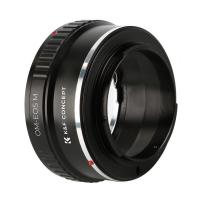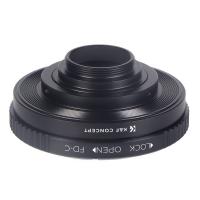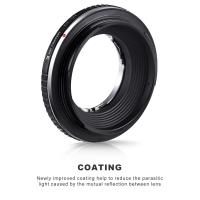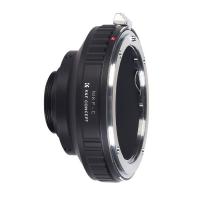Who Invented The Compound Light Microscope ?
The compound light microscope was invented by Dutch scientist Zacharias Janssen and his father Hans in the late 16th century.
1、 Early history of microscopy
The compound light microscope, also known as the optical microscope, is a device that uses a series of lenses to magnify small objects. The invention of the compound light microscope is attributed to several individuals who made significant contributions to its development.
The earliest known microscope was invented in the late 16th century by Dutch spectacle maker Zacharias Janssen and his father Hans. They created a simple microscope that consisted of a convex lens mounted in a tube, which could magnify objects up to nine times their original size.
In the early 17th century, Italian scientist Galileo Galilei improved upon the design of the microscope by adding a second lens, creating a compound microscope that could magnify objects up to 30 times their original size.
However, it was Dutch scientist Antonie van Leeuwenhoek who made the most significant contributions to the development of the compound microscope. In the late 17th century, he designed and built his own microscopes, which were capable of magnifying objects up to 300 times their original size. He used these microscopes to observe and describe microorganisms, which he called "animalcules."
While the exact inventor of the compound light microscope is not clear, it is clear that the development of the microscope was a collaborative effort by several individuals over time. Today, the compound light microscope remains an essential tool in scientific research and is used in fields such as biology, medicine, and materials science.

2、 Development of compound microscopes
The compound light microscope was not invented by a single individual, but rather developed over time by multiple scientists. The earliest known microscope was created by Dutch spectacle maker Zacharias Janssen in the late 16th century. However, it was not until the 17th century that the compound microscope began to take shape.
One of the most notable contributors to the development of the compound microscope was Dutch scientist Antonie van Leeuwenhoek. He is credited with improving the design of the microscope and using it to make groundbreaking discoveries in microbiology. Leeuwenhoek's microscopes were simple, single-lens devices that he crafted himself, but they allowed him to observe and describe microorganisms for the first time.
Another important figure in the development of the compound microscope was Robert Hooke, an English scientist who published a book in 1665 called "Micrographia." In this book, Hooke described his observations of various objects under a microscope, including insects, plants, and even the structure of cork. Hooke's work helped to popularize the use of microscopes and inspired other scientists to continue improving upon the design.
Today, the compound microscope continues to be an important tool in scientific research and education. Modern microscopes have advanced significantly since their early days, with features such as digital imaging and high-resolution optics. However, the basic principles of the compound microscope remain the same, and its impact on our understanding of the natural world cannot be overstated.

3、 Contributions of Zacharias Janssen and Hans Lippershey
The invention of the compound light microscope is attributed to the contributions of Zacharias Janssen and Hans Lippershey, two Dutch spectacle makers who lived in the late 16th century. According to historical accounts, Janssen and Lippershey were experimenting with lenses and discovered that by placing two lenses in a tube, they could magnify objects. This led to the creation of the first compound microscope, which was capable of magnifying objects up to nine times their original size.
While Janssen and Lippershey are credited with the invention of the compound microscope, there is some debate among historians about the exact nature of their contributions. Some argue that Janssen and Lippershey were not the first to create a compound microscope, but rather improved upon existing designs. Others suggest that the invention of the microscope was a collaborative effort involving multiple individuals.
Despite these debates, there is no denying the significant impact that the compound microscope has had on science and medicine. The ability to magnify and study microscopic organisms and structures has led to countless discoveries and advancements in fields such as biology, chemistry, and physics. Today, the compound microscope remains an essential tool in scientific research and education, and its invention is considered a pivotal moment in the history of science and technology.

4、 Role of Antonie van Leeuwenhoek in improving microscopes
The compound light microscope was not invented by a single person, but rather developed over time by multiple scientists. However, one of the most significant contributors to the improvement of microscopes was Antonie van Leeuwenhoek. He was a Dutch scientist who lived in the 17th century and is often referred to as the "father of microbiology."
Van Leeuwenhoek was not a trained scientist but was skilled in crafting lenses. He used his expertise to create microscopes with much higher magnification than those available at the time. He was able to observe and describe microorganisms, such as bacteria and protozoa, for the first time. His observations were crucial in advancing the field of microbiology and helped to disprove the theory of spontaneous generation.
Van Leeuwenhoek's microscopes were simple, single-lens devices that he held up to his eye. He used them to observe a wide range of specimens, including blood, insects, and even his own dental plaque. His work paved the way for the development of more complex microscopes, including the compound light microscope.
Today, the compound light microscope is a standard tool in many scientific fields, including biology, medicine, and materials science. It uses multiple lenses to magnify specimens and can reveal details at the cellular and molecular level.
In recent years, there has been a renewed interest in improving microscopy techniques, including the development of super-resolution microscopy. These techniques allow scientists to observe structures and processes at an even higher level of detail than was previously possible. However, the contributions of early pioneers like van Leeuwenhoek cannot be overstated, as they laid the foundation for the remarkable advances in microscopy that we enjoy today.









































